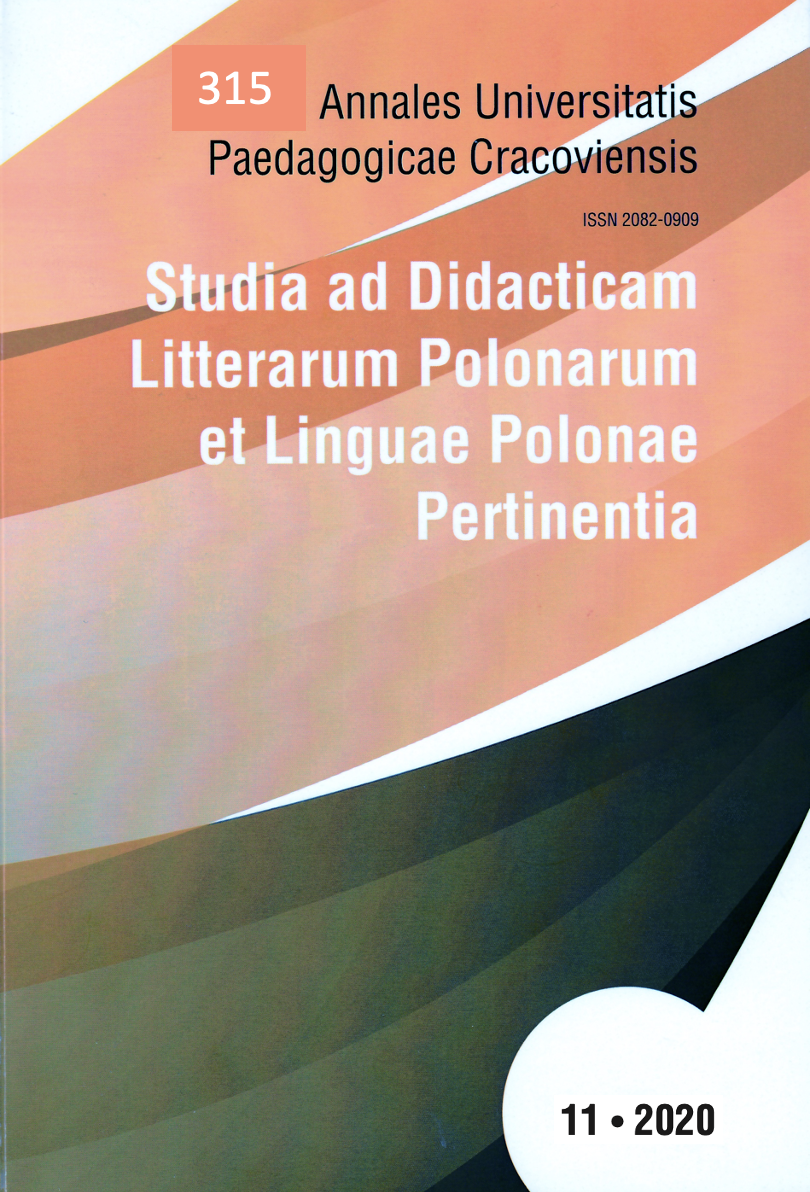Акценти као правописни знаци у правописној и уџбеничкој литератури – методички осврт
Accents as Orthographic Signs in Orthography and Textbook Literature – a Methodical Review
Author(s): Goran ZeljićSubject(s): Language and Literature Studies, Education, Applied Linguistics
Published by: Wydawnictwo Uniwersytetu Komisji Edukacji Narodowej w Krakowie
Keywords: Serbian orthography; accent; orthographic signs; Serbian language methodology;
Summary/Abstract: In this paper, the author analyzes the orthographic rules for writing accents in the textbooksof Serbian grammar at primary and secondary level, as well as in orthographic manuals. Atthe forefront, there are rules for the use of accent marks in written text. The analysis willcover examples from literature (poetry and prose) to determine in which situations theaccents should be placed on the written text and what its function is. The orthoepic norm is an essential part of linguistic standardization. Primarily, it refers to spoken language as oneof two forms of realization of standard (literary) language and implies rules for pronunciationof words, i.e. their accents. This orthoepic standardization implies rules for the distributionof accents in the Serbian language, and as such is entered into all three basic pillars ofour standard language – in normative grammars, orthography manuals, and normativedictionaries (the exception being, for example, the syllable superlatives of an adjective, likethe najjednostavniji), that the accent carriers are vowels or the syllable r (eg. prvi), that theaccent cannot be on the last syllable, that monosyllables can only have descending accents(eg. put) and not accentuating accents. Finally, it was systemically resolved that the foreignwords entered into the Serbian language are to be adapted to our accent (eg fr. Ruso and notRuso, lit. Brazauskas and not Brazauskas). Students come across the accents in the primary school first. Within the area of correct(spoken) speech, some important features of the accents are given. It is not written at thetime, it is not introduced as a graphic / spelling sign, but rather by emphasizing the stylein which students are emphasized in the place of the stress. For example PRI-po-vet-ka,gra-MA-ti-ka. Already at that age, for the first time, it is emphasized that different stressescan change the meaning of words, e.g. O-ba-vi-ti („to do something“) and o-BA-vi-ti („towrap something“), and to mark another form of the same word, which is most commonlyassociated with declension, e.g. i-ME-na (nominative plural) vs. I-me-na (genitive singular)Later, in six grade, accent marks are introduced, first long ones, as students can more easilyrecognize them. Again, quite correctly, it is pointed out that, based on the length of theaccented syllable, two homonyms can be distinguished, e.g. skUp – noun: skUUp – adjective;kAda – adverb: kAAda – noun, or with a recorded accent, e.g. mlada – noun meaning „bride“:mlada – adjective in feminin. Although they are part of the orthoepic norm, accents are alsopart of orthography, because the spelling norm puts them in spelling signs, along with thebreak sign (…), apostrophe (`), genitive sign (ˆ), and other, auxiliary, signs (e.g. in the currentspelling of 2010). A note about accent writing in the text is already found in Milan Petrovic(orthography manual from 1914), which states that accent characters are used in writingtogether with the length character and apostrophe, when two words differ only in accentfrom another, e.g. grad and grad. The analysis of the spelling literature showed that overtime the instruction on writing accents has been lost, and thus in the current Matica srpska’sorthography, although they are orthographic sings, there is no indication when they shouldbe written, thus making them categorized as orthographic. The examples we have shown inthe paper prove that accent writing is motivated not only by the meaning of words (primarilyin terms of homonymy), but is sometimes also part of stylistic means of expression, when thepoet consistently adheres to the metric pattern and even changes the standardized quantityand quality of the accent of a word. Based on these examples from literature, both poetry andprose, the paper recommends that the orthography manuals emphasize in the orthographymanual that the emphasis in the text is noted when it is phonologically relevant.
- Issue Year: 11/2020
- Issue No: 315
- Page Range: 52-60
- Page Count: 9
- Language: Serbian

